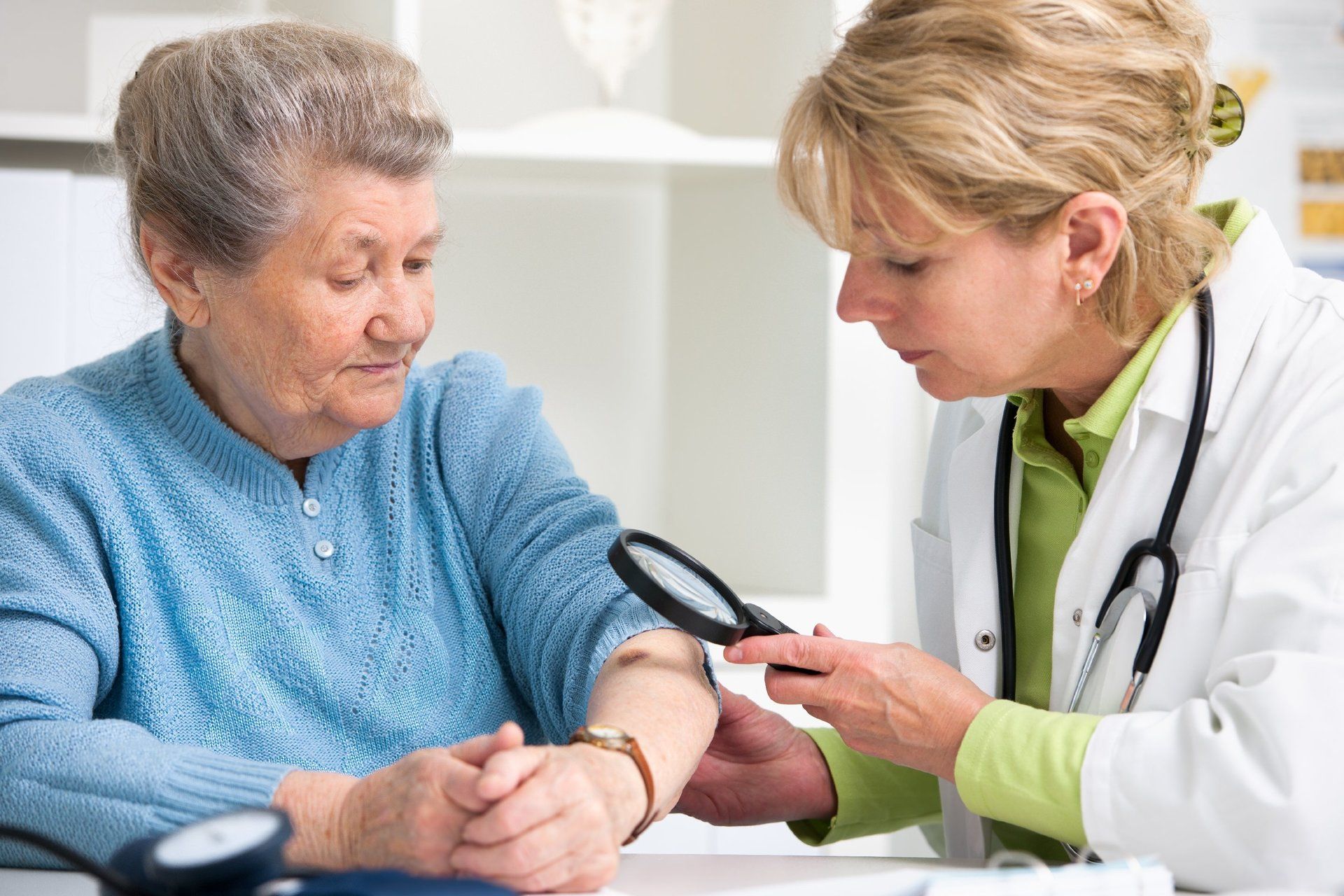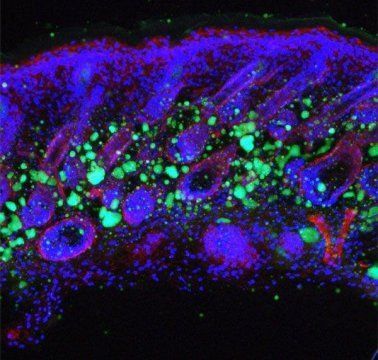ACNE SCARRING: EVERYTHING YOU NEED TO KNOW
- By Editor
- •
- 09 Oct, 2018
- •
It’s the world’s most common skin disease. Affecting men and women of all ages, acne can be found on the face, neck, back, chest and shoulders. Yet, frustratingly there is no cure for acne, which according to the Australasian College of Dermatologists, will affect 85 per cent of Australians at some time during their lives. The key to controlling acne lies in deciphering its cause and treating it appropriately.
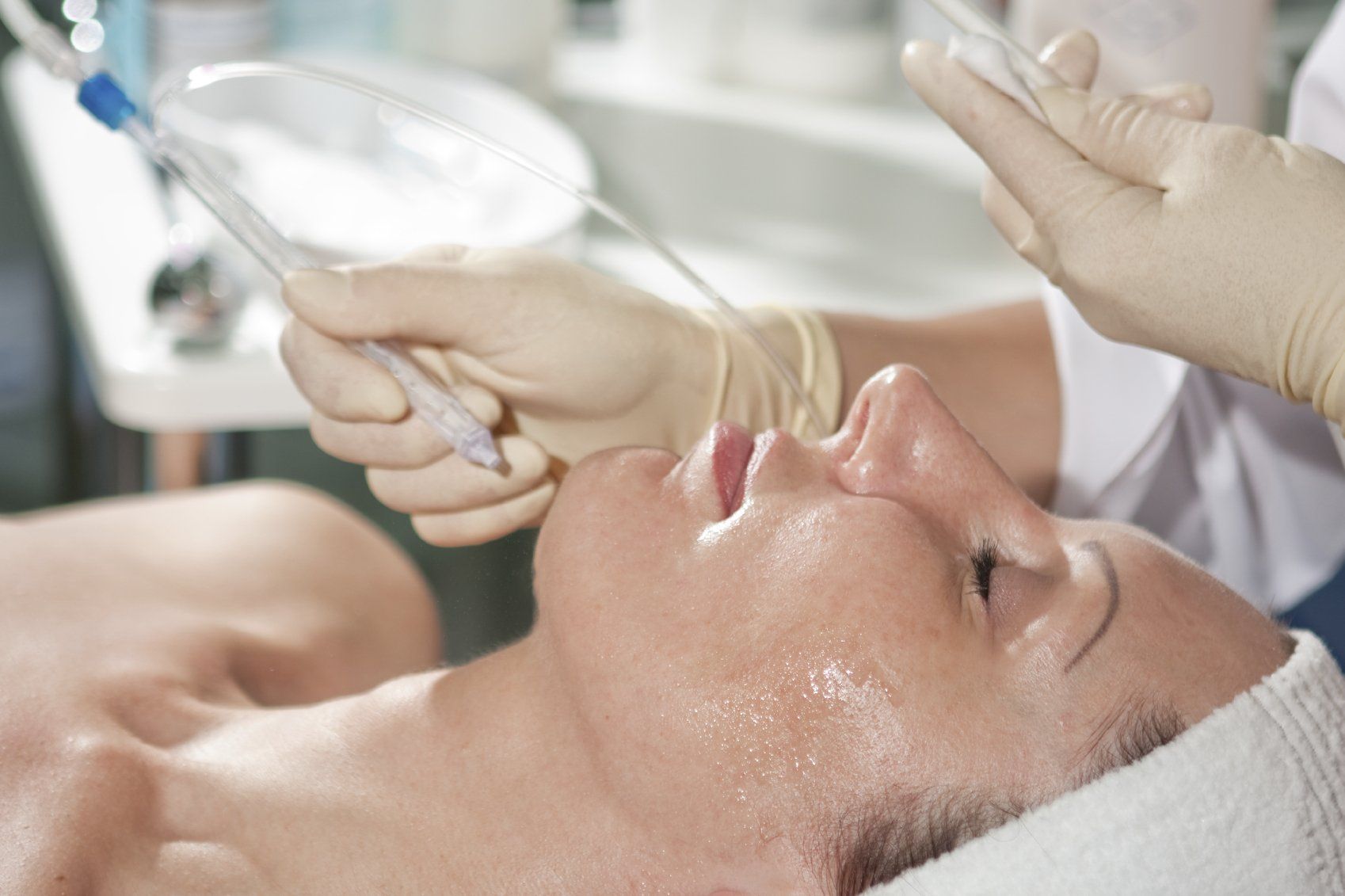
- What is acne?
Acne is a chronic skin condition which appears as an outbreak of plugged pores (see here to determine which kind of pimple you have). 'Acne' refers to a group of pimples, while a single spot is known as an acne lesion.
- What causes acne?
Everything from chocolate to dirt has been blamed for acne at one time or another, but the truth is that a number of factors contribute to the appearance of acne. “Some teenagers get acne and others don’t, primarily due to one's genetics,” says Emma Hobson from the International Dermal Institute and Dermalogica. “If one of your parents suffered from acne you have approximately a 50 per cent chance of having it yourself. Boys tend to suffer a little longer than girls with prolonged acne, but you can be looking at anything from one to five years.”
Acne forms when the sebum (oil) that is naturally produced by the skin mixes with dead skin cells and normal skin bacteria, Propionibacterium acnes (P acne bacteria), in the hair follicle. This causes the congestion and decrease in oxygen flow that results in a pimple.
Chances of developing acne are increased under certain conditions, such as:
Increased sebum production – The presence of extra sebum in the follicle increases the chance of clogs occurring.
Hormones - At puberty, the body begins to produce hormones called androgens. These cause the sebaceous (oil) glands to enlarge, causing an increase in sebum production. These hormonal fluctuations can continue well past the teen years and result in adult acne.
Bacteria - P acne bacteria is always present upon the skin but an increase in this bacteria can leave behind fatty acids that instigate irritation and redness. When a follicle is plugged, this bacteria thrives on the extra sebum and dead skin cells, creating the chemical reaction which causes inflammation in the lining of the follicle and surrounding skin.
Retention hyperkeratosis – While dead skin cells within the follicle are normally shed gradually and pushed to the surface, retention hyperkeratosis produces more dead skin cells than normal skin. These excess cells then stick together tightly, promoting follicular blockage.
Stress – Stress triggers the pituitary gland to stimulate the adrenal glands. In women, these glands produce testosterone, which results in an increased production of sebum. Stress also increases cortisol levels in the body and this can also affect hormones.
Lifestyle – Getting enough sleep, drinking plenty of water, eating a balanced diet and developing good hygiene habits can also help prevent acne.
- Routine
In addition to daily cleansing and treatment products, a good daily skincare routine should involve moisturizer and sunscreen.
Cleanse
You should cleanse your skin one to two times a day, but be careful not to overdo it as cleansing can strip away the skin’s protective oils. Cleansing more than twice a day can also lead to dryness and irritation, stimulating the skin to produce an overcompensation of oil. "Avoid products with alcohol that strips, irritates and dries the skin".
Try our Cleansing Kit. This lush, moisturizing duo is suitable for all skin types and delivers essential anti-aging elements in the form of Meteorite Powder and Vitamin B3 while it gently clears away traces of makeup, dirt and other impurities from your skin without irritation or dryness.
Exfoliate
You should gently exfoliate your skin about once a week to help unclog pores and keep them clear. Avoid harsh, grainy scrubs that can overstimulate the skin and cause excess sebum production and try an acid exfoliation formula.
Try our Facial Peel. Our Venus Facial Peel provides a superior cleanse, designed to remove built-up dirt and make up. This gentle cleanser is infused with meteorite powder and camellia sinensis leaf extract to achieve a smooth and refreshed look.
Treat
When treating spots, look for the ingredients listed above, use products as directed and remember to be patient – give the treatment a fair amount of time to work.
Try our new Blue Light Therapy Medical Device. The Ivory is an FDA cleared device that is clinically proven and dermatologist recommended. It uses blue light phototherapy and topical heat to disinfect and detoxify the skin. The Ivory eliminates bacteria trapped under the skin’s surface, reducing redness and inflammation. It heals the sebaceous glands and minimizes pores, ultimately revealing a smoother, healthier complexion.
Moisturise
“A moisturiser will help protect the skin. You can find some great oil-free feather light skin lotions and moisturisers that melt into the skin. Some may actually contain ingredients to assist the acne condition, such as salicylic acid or microsponges which actually mop up excess oil in the skin and help reduce shine.”
Try our Daily Routine Products. Our Venus Sensitive Day Cream has a unique blend of aloe barbadensis leaf extract, retinyl palmitate, and palmitoyl hexapeptide-12 will ease away the appearance of wrinkles to create a more youthful and luminous look.
Venus Night Cream. This luxuriously lightweight cream is formulated with powerful anti-aging vitamins and botanical extracts. Use nightly and awaken to a luminously youthful appearance to your skin and a visible reduction in signs of fine lines and wrinkles.
Sunscreen
It’s a myth that sunlight can help improve acne, but that’s not the only reason you should stay out of the sun. Sunlight can increase early ageing of the skin. Some acne treatments can also increase the skin’s sensitivity to ultraviolet light, making it even more important to invest in a light, non-oily sunscreen.
Try our Bright Skin Cream SPF 30. This lush daytime moisturizer is formulated with an SPF of 30 and delivers rich botanicals and antioxidants to your skin, helping to strengthen your natural barriers against UV rays, pollution and other harmful free-radicals.
- Things to avoid
Avoiding trigger ingredients is every bit as important as seeking helpful ones. “Essentially, you must always look for the term ‘non-comeodogenic’,” says Hobson. “This means that there are no ingredients in the product that will cause congestion in the follicle. Ingredients such as D & C red dyes [used for colour] and isopropyl myristate, which is often used to give make-up a velvety feel and spreadability, creep into the follicle, causing irritation and leading to an increase in sebum production and dead cell build up.”
Comedogenic ingredients to avoid include acetylated lanolin, butyl stearate, cocoa butter, flax oil, linseed oil, isopropyl myristate, peanut oil and palmitic acid. Mineral make-up is a good choice for those with acne-prone skin as it is non-comeodogenic, does not contain harmful ingredients, reduces the risk of an allergic reaction and is also anti-inflammatory.
- Severe acne
If you have a moderate to severe acne condition and over-the-counter products have little or no effect, you should seek professional medical advice from a dermatologist or GP. They can offer solutions only available on prescription, including strong preparations of vitamin A derivatives. Prescribed oral antibiotics are also effective in treating acne, as are oral contraceptives for females. Another option is blue light therapy, which activates porphyrins in the hair follicles and causes the destruction of the bacteria within.
- Acne Scarring
Scarring is a nasty side effect of acne that can leave behind a reminder for years to come. While no one knows exactly why acne can become a scar, picking at pimples or treating spots incorrectly doesn’t help. “The way a scar forms is affected by genetics, an individual’s age and the location on the body or face. Younger skin makes strong repairs and tends to over-heal, resulting in larger, thicker scars than older skin,” explains Hobson.
Try our Red and Infrared Light Therapy Medical Device. The human body, while not able to actually perform photosynthesis, is able to use light rays for various health benefits, such as the long waves of light in infrared therapy. As we age, cellular activity decreases, but with the correct wavelengths of LED light, underlying dermal cells may still receive rejuvenating care. Red and infrared light stimulate collagen production to promote natural skin cell growth, reducing wrinkles and fine lines to reveal healthier, younger looking skin.
- Types of scarring
Pseudo-scars – Some formations may look like acne scars but will eventually disappear, leaving no permanent mark. These marks include macules, flat reddish spots that form the final stage of an acne lesion, and post-inflammatory pigmentation, which is a patch of discolouration at the site of a healed or healing inflamed acne lesion. Macules may last for up to six months while post-inflammatory discolouration, which is more common in people with darker skin or those who overexpose themselves to the sun, may persist for up to 18 months.
Hypertrophic scars – These usually develop within the first four to eight weeks following an acne outbreak and appear as a pink, firm, raised band. In some people, these scars gradually disappear; in others they may persist or even enlarge slightly.
Atrophic or ice-pick scars – Often difficult to eradicate completely, these scars occur after moderate to severe inflammatory acne. The inflammation associated with these disorders disrupts the normal underlying collagen and leaves the cutaneous surface of the skin with multiple indentations. These are usually small with a jagged edge and steep sides.
Keloid scars – The result of an overly aggressive healing process, these occur when the skin cells respond to injury by producing an excess of collagen that then forms into a lumpy, fibrous mass. This type of scarring more commonly occurs in people with darker skin.
- Treatment
Some scars will fade to a manageable point over time but others might require action to improve their appearance. There are a number of treatment options for scarring, most of which involve the removal of the top layer of the skin. “Scars need a treatment protocol to re-damage and remove the scarred tissue and then repair and rebuild a stronger firmer tissue underneath,” details Dickson.
Peels – Peeling treatments employ chemicals to remove the outermost layer of the skin, improving and smoothing skin texture.
Laser resurfacing or laser peels – A carbon dioxide laser is used to remove areas of damaged skin layer by layer, minimising the damage to healthy tissue. It may leave skin swollen for one to two weeks and red for six to 12 weeks.
Microdermabrasion – The skin is sandblasted by micro crystals/ granules to remove the top layer of the skin and dead skin cells. It also promotes the production of new cells in the deepest layer of the dermis. It can leave you with temporary redness, increased sun sensitivity and dryness.
Daily treatments - Exfoliation can speed up the healing of macules while whitening and fading products which suppress melanin production can help with post-inflammatory pigmentation.
- Prevention
Although it is not entirely clear why we scar, the chances of a scar occurring can certainly be reduced. ”The quicker the skin problem is brought under control, the less likely it will scar,” says Dickson. “So they key to preventing skin from scarring from acne is to eliminate the inflammation as quickly as possible and heal the infection.” Hobson adds that reducing skin trauma is also crucial. “Absolutely never squeeze a spot. This is an inflamed lesion filled with bacteria, and if you squeeze it you can spread the infection, cause damage to the very delicate skin and end up having not only more spots but a scar as well. "Remember, a spot may last a week but a scar can last a lifetime," says Hobson.

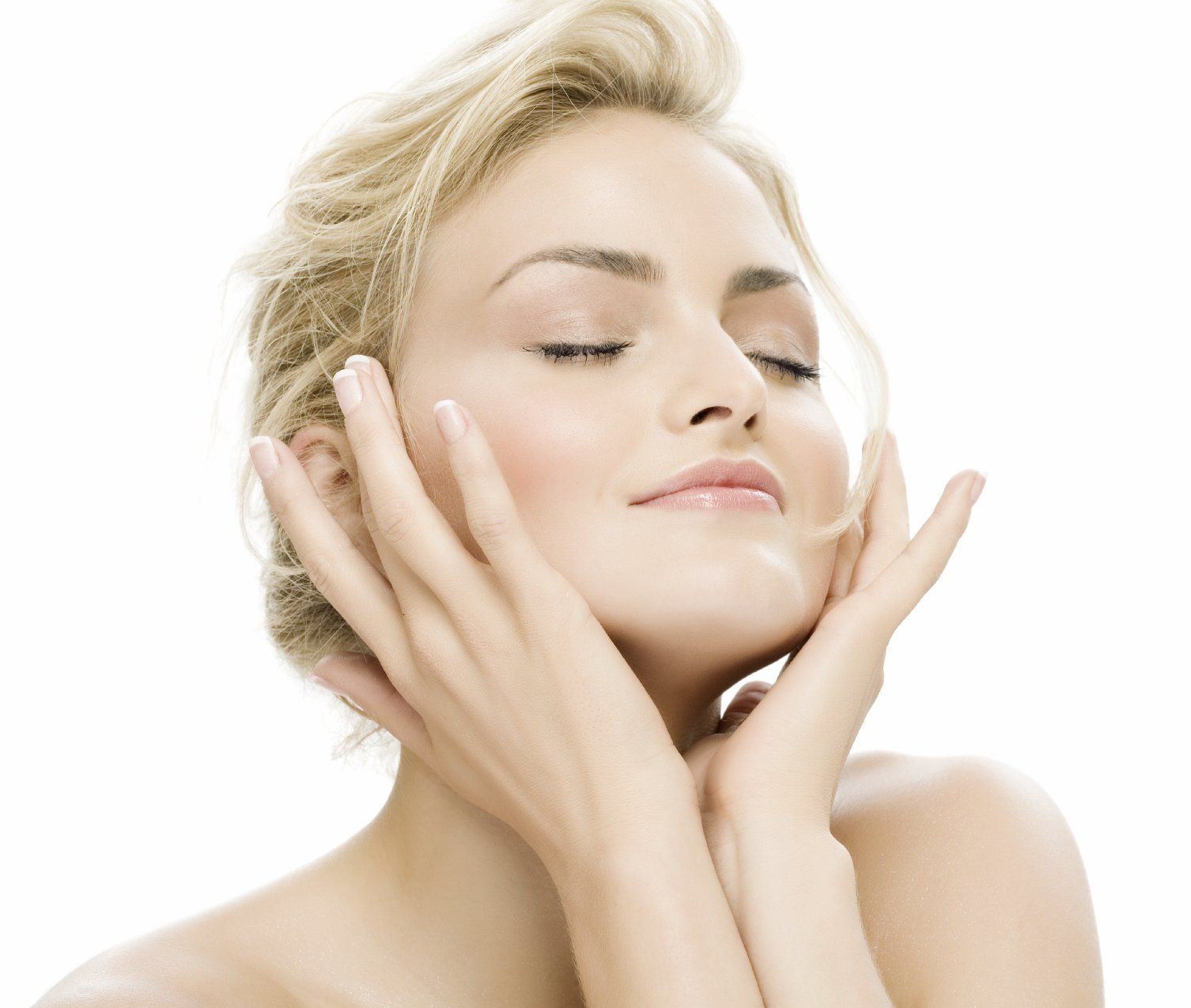
- Myth #1: All Sun Must be Shunned
Getting safe sun exposure every day is actually one of the best actions you can take for your health, as this is how your body produces enough essential vitamin D, which is known to protect against cancer (including melanoma) and support your immune system, cardiovascular system, kidney function, bones and teeth, muscle strength and much more.
While excessive sun exposure, such as getting sunburned, can certainly damage your skin, sensible sun exposure is not only quite healthy, it's a fundamental step in reaching optimal health.
The skin around your eyes and your face is typically much thinner than other areas on your body and is a relatively small surface area so will not contribute much to vitamin D production. So it is strongly recommended that you protect this fragile area of your body, as it is at a much higher risk for cosmetic photo damage and premature wrinkling. You can use a safe sunblock in this area or wear a cap that always keeps your eyes in the shade.
- Myth #2: Tanning Must be Avoided
Assuming you use sensible exposure and avoid getting burned, sensible tanning the "old-fashioned" way (i.e. out in the sun) is perfectly acceptable. The first few days, you should limit your exposure to the sun to allow your body's melanocyte cells to rev up the ability to produce protective pigmentation that not only gives you a tan, but also serves to help protect you against overexposure to the sun.
If you are a fairly light-skinned individual that tends to burn, you will want to limit your initial exposure to a few minutes, especially if it is in the middle of summer.
The more tanned your skin will get, and/or the more tanned you want to become, the longer you can stay in the sun. If it is early or late in the season and/or you are a dark-skinned individual, you could likely safely have 30 minutes on your initial exposure. If you are deeply pigmented and your immediate ancestors are from Africa, India or the Middle East, it is possible you may not even have to worry about how long you are exposed.
Always err on the side of caution however, and let it be your primary goal to never get sun burned, while also protecting the sensitive skin around your eyes and face, as noted above.
- Myth #3: Sunless Tanning Lotions/Sprays are Safe
Sunless tanners contain a lengthy list of chemical agents — up to 45 in the case of spray tanners. Many of these agents have never been studied for their long-term effects on human health, because the U.S. Food and Drug Administration does not systematically review the safety of personal care products.
One of the main ingredients in spray tanning solutions is dihydroxyacetone, a color additive that darkens your skin by reacting with amino acids in your skin's surface layer. Dihydroxyacetone is often abbreviated DHA (which should not be confused with docosahexaenoic acid, the healthy omega-3 fat often given the same abbreviation).
Manufacturers of sunless tanning products claim DHA is a simple carbohydrate sugar solution, but some toxicologists disagree. Part of the problem is that the U.S. government's regulations for DHA allow contaminants such as lead, arsenic and mercury. Further, a report by the National Toxicology Program 1 suggests the risks of DHA remain unclear, pointing to some evidence that DHA may be a mutagen that could induce breaks in DNA strands, which could contribute to accelerated aging and even skin cancer.
- Myth #4: The Higher the SPF of Your Sunscreen, The Better
It's generally unnecessary to purchase sunscreen with a sun protection factor (SPF) greater than 50. The reason for this is because while SPF works by absorbing, reflecting or scattering the sun's rays on your skin, its protective ability is not linear and does not offer a great deal more protection at higher levels.
With regards to SPF, another important factor to remember is that SPF only protects against UVB rays, which are the rays within the ultraviolet spectrum that allows your body to produce vitamin D in your skin. But the most dangerous rays, in terms of causing skin damage and cancer are the UVA rays. This is why you always want to make sure any sunscreen you buy protects against UVA's as well as UVB's … and does NOT contain any common toxic ingredients , such as oxybenzone or retinyl palmitate.
Myth #5: All Skin Care Products on the Market are Safe
It is important to understand that of the 10,500 ingredients used in your personal care products, fewer than 20 percent have been reviewed for safety in the last 30 years, according to an Environmental Working Group (EWG) analysis. 2
The reviews that have been done were conducted by a fox in the henhouse—the Cosmetics Ingredients Review, which is run by the cosmetics industry! Not all ingredients need even be mentioned on the label—if they don't want to include one for some reason, they can just leave it off. Therefore, most personal care product formulations are based on nothing more than marketing success, designed to smell good, look good and feel good when you rub them on your skin, regardless of their impact on your health.
But in reality, as the CNN video above describes, many skin care products on the market contain chemicals (including parabens, phthalates, triclosan and others) that have been linked to cancer, hormone disruption, reproductive toxicity and other health problems.
One of the core principles to remember when it comes to skin care is that whatever you slather onto your skin will be absorbed into your body and enter your bloodstream. This is why it's so important to avoid skin care products containing questionable chemicals! Your skin is an excellent drug delivery system, so you should be just as careful with what you put on your skin as you are with what you eat, if not more so, as your gut actually helps protect you against some of the toxins you ingest by filtering them out ... a protection you don't get when a chemical is absorbed through your skin.
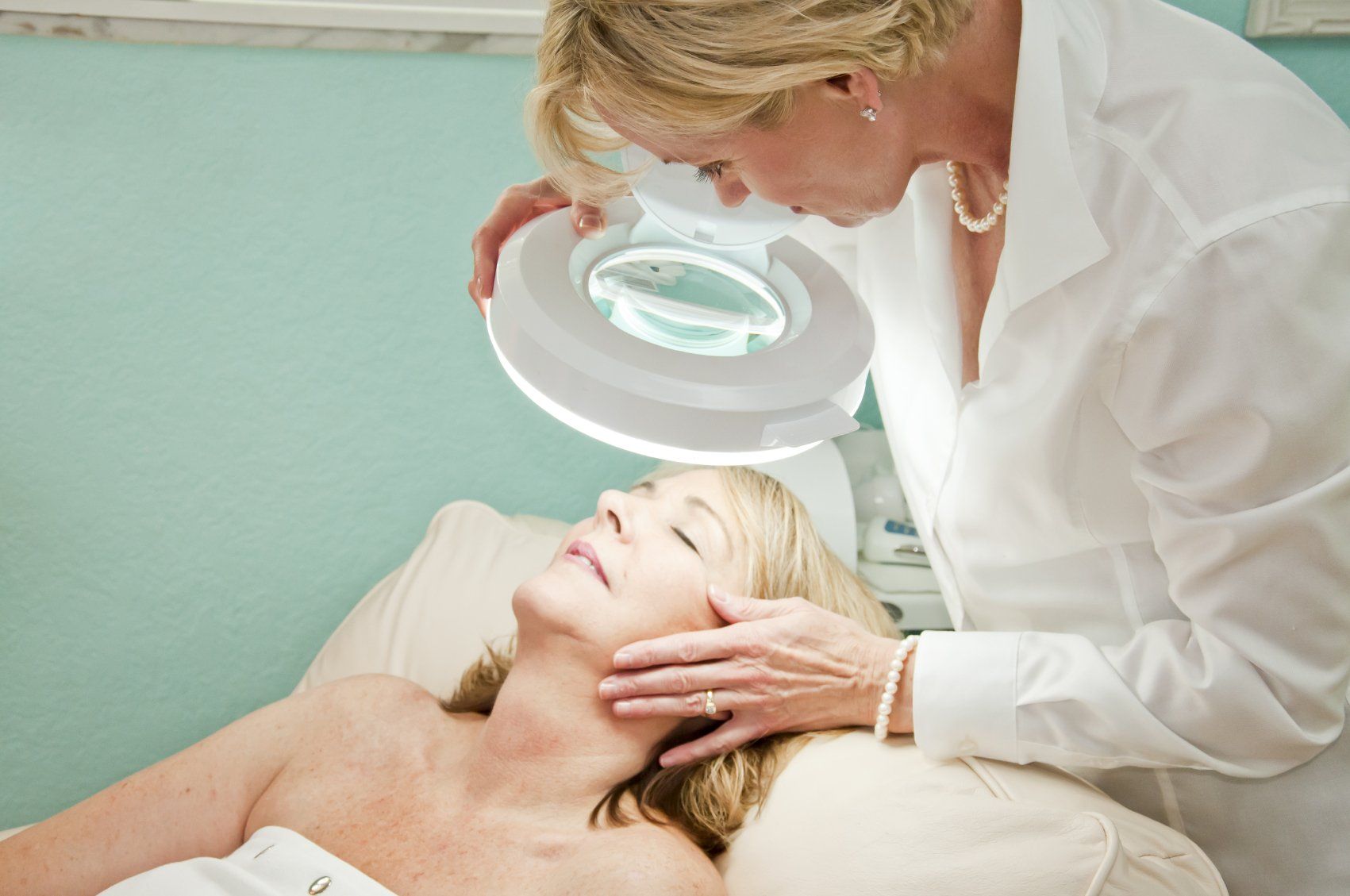
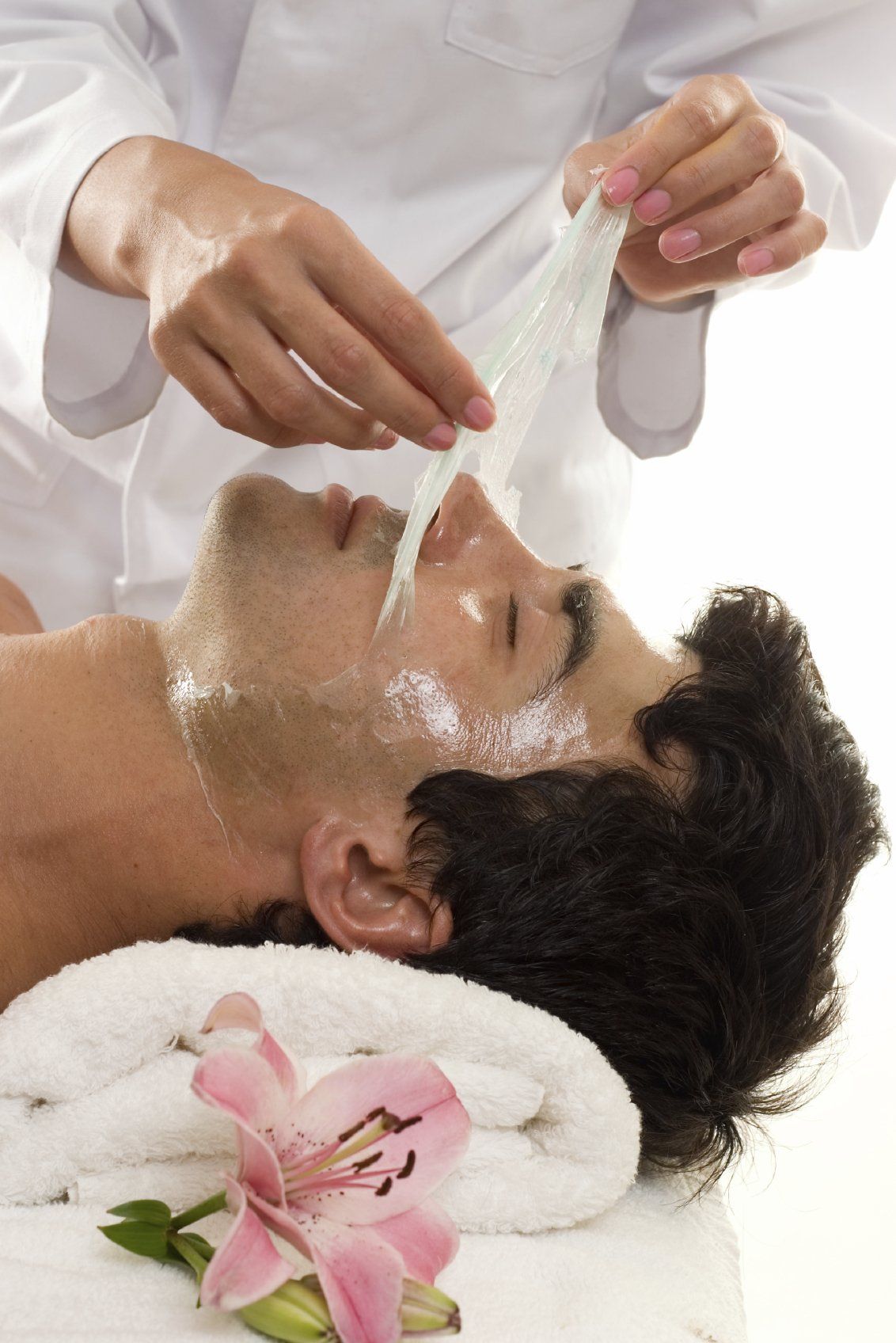

Ever wonder how women in ancient times or in the Renaissance used to make themselves beautiful?
Well, let’s just say they didn’t have the skincare wonders we have now – med spa procedures, Botox , and countless anti-aging creams and serums.
Curious to learn more about the history of skin care? Then travel back through time with us as we discuss how women in ancient cultures up to modern day cared for their skin.
HOW DID PEOPLE LOOK HOT CENTURIES AGO?
Ancient Egypt
Did you know that the first archaeological evidence of cosmetics is from Ancient Egypt roughly 6,000 years ago? But cosmetics weren’t just for aesthetics – they also protected the Ancient Egyptians from the elements, like the sun and insects. Makeup was also used to honor gods and goddesses. In terms of skincare, the Ancient Egyptians used castor, sesame, and moringa oils to fight wrinkles and preserve their youth. Ancient Egyptians also made a soap paste out of clay and olive oil to cleanse their skin. What is more, Egyptian women incorporated honey and milk masks into their beauty regimes to moisturize their skin, and they also took milk baths and used dead sea salts to exfoliate, rejuvenate, and heal their skin.
Ancient Greeks
In Ancient Greece, precious oils, perfumes, cosmetic powders, eye shadows, skin glosses, paints, beauty unguents, and hair dyes were in universal use. Ancient Greeks made their own skincare products using local, natural ingredients. One of the most widely used skincare treatments was mixing fresh berries with milk, and then applying the paste on the facial area. The Ancient Greeks also used olives and olive oil as exfoliants and moisturizers. Lastly, honey along with milk and yogurt were used as anti-aging preparations.
Medieval Times
During the 12th century, cosmetics were regularly used in medieval Europe. Ointments consisted of animal fats. Smooth, white skin was highly regarded, and many women used herbal remedies to promote fair skin and diminish pimples. Aloe vera, rosemary, and cucumbers were used to cleanse the skin. Seeds, leaves, and flowers were also mixed with honey to create face masks, and vinegar was used as an astringent.
Renaissance
Women in the Renaissance period used silver mercury, lead, and chalk to color their faces. Most of the skin care practices were the same as the medieval period, and women primarily relied on herbs and honey to cleanse and rejuvenate their skin. Some other skin care remedies included using broom stalks to cleanse the skin and oatmeal boiled in vinegar to treat pimples. Bread soaked in rose water was also used to soothe puffy eyes.
The Baroque Era
During the Baroque Era, women believed in saunas and sweat cleansing. Milk baths were also used for smoother, clearer skin. Make up during this time was intended to look like paint, and heavy makeup was considered more respectable. Rouge was very popular, and in the 1780s, French women used two million pots of rogue per year. Women’s lips were reddened with distilled alcohol or vinegar.
1800s
Exercise, cleanliness, and skincare were all held in high regard during the 1800s. Zinc oxide was used to lighten skin, but often caused allergic reactions. Hygiene products became less expensive and more accessible. Harsh cleansers were often used as were egg yolks, honey and oatmeal to often the skin and help diminish blemishes. Lemon juice was also used to naturally bleach the skin a few shades lighter. During this time, too, Chapstick, Vaseline, and baby powder were invented, all of which were used in skincare regimes.
1900s
The 1900s was an explosion in terms of accessible skincare for women. Carmex was invented in 1937, and sunscreen in 1944. In 1946, Estee Lauder launched their cosmetics line in NYC, and then in the 1950s Clearasil, Ponds, Oil of Olay, and Clinique were all launched, too. The 1980s saw a rise in all natural skincare products. Dr. Howard Murad’s line was launched in 1989, and Burt’s Bees in the 1980s, too. In 2002, the FDA approved Botox for frown lines on the face. In 2007, The Zeno, a hand-held, battery-operated device, transfers heat onto a blemish, killing the bacteria and making them disappear after only a few treatments.
Reference:
https://www.laseraway.com/news/brief-history-skincare-ages/

Studies have shownthat eating foods with these deeply colored pigments can make your face actually look healthier than being tanned. [1]
The more red and yellow tones found in your skin, the more attractive the people were found to be. The redder tones are caused when people are flushed with blood, particularly if the blood has lots of oxygen in it. Researchers found that, given the choice between skin color caused by suntan and skin color caused by carotenoids, people preferred the carotenoid skin color, so if you want a healthier and more attractive skin color, you are better off eating a healthy diet.
In order to have clear, healthy skin, you need to make sure your body is relatively free of toxins, so cleansing your body of dangerous substances while putting in the finest nutrients is essential. The organs responsible for providing you with beautiful skin include your liver, kidneys, adrenals, thyroid, and your large and small intestines.
- Your liver and kidneys are the two organs that filter out impurities on an ongoing basis. If your diet is less than ideal, these two organs can easily become overtaxed, which can lead to breakouts and other skin problems.
- Your adrenals make many essential hormones, such as pregnenolone, DHEA, estrogen, progesterone and testosterone. Hormonal imbalances can also result in problematic skin conditions, so adrenal function is important as well.
- A well-nourished, energetic thyroid also provides hormones and works closely with your adrenals to create energy. Dry, flakey, sluggish skin can be evidence of a weak thyroid.
- Your small- and large intestines provide nutrients to all your organs and remove waste products from your body. When waste meant for elimination remains in your intestines your skin becomes thick, oily and blemished. Pure, flawless skin is typically a reflection of clean intestines.
Eating a healthy diet as described in my nutrition plan , which focuses on whole, bioavailable organic foods, is your number one strategy for helping your body detox naturally while supplying the necessary nutrients your skin needs to thrive. That said, some foods are particularly effective at promoting beautiful, clear skin, including:
- Animal-based omega-3 fats: Omega-3 fats help to normalize skin lipids and prevent dehydration in the cells. This keeps skin cells strong and full of moisture, which can help to decrease the appearance of fine lines. Fatty acid deficiency can manifest in a variety of ways, but skin problems such as eczema, thick patches of skin, and cracked heels are common. Plus, omega-3 fats may have an anti-inflammatory effect that can help to calm irritated skin, giving you a clear, smooth complexion.
- Vegetables: Ideally fresh, organic and locally grown.
- Fermented foods are even better as they can start with the same vegetables but are converted by bacteria to superfoods, which help promote the growth of friendly intestinal bacteria and aid in digestion.
- Avoid Sugars, Fructose and Grains: This is probably the single most important step you can take to improve your skin health. If you eliminate all sugars, fructose and grains from your diet for a few weeks there is a major likelihood you will notice rapid improvement in your complexion.
Reference:
[1] Evolution and Human Behavior Volume 32, Issue 3, May 2011, Pages 216–227

